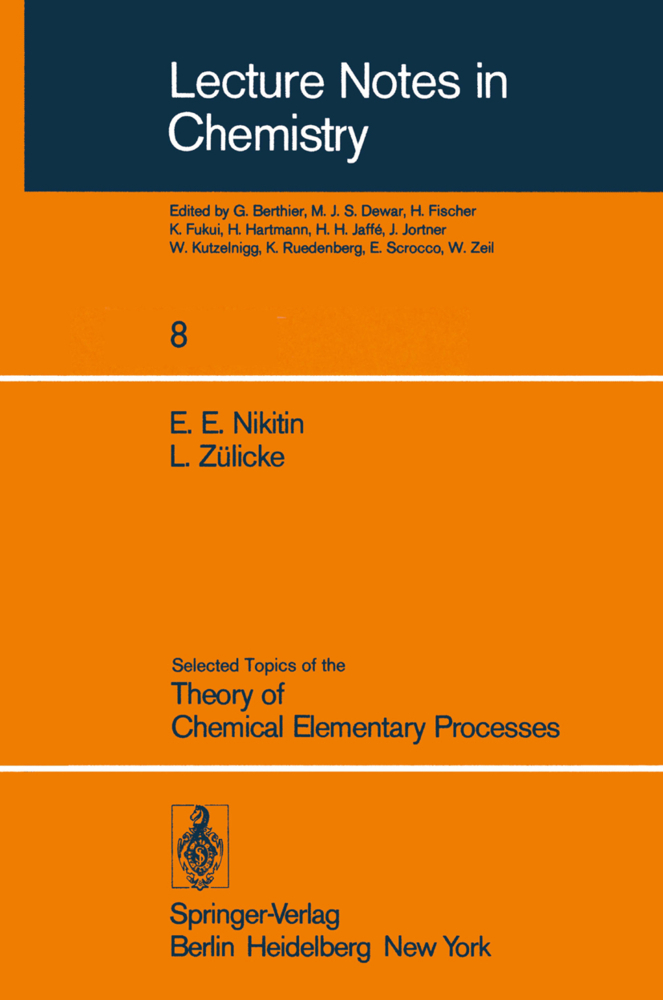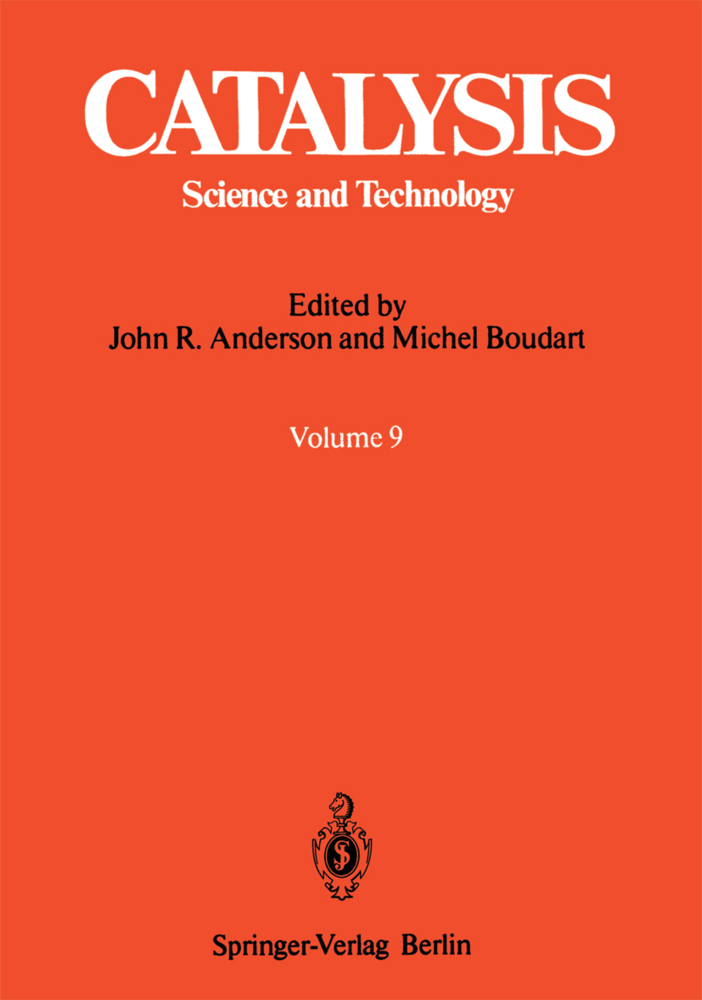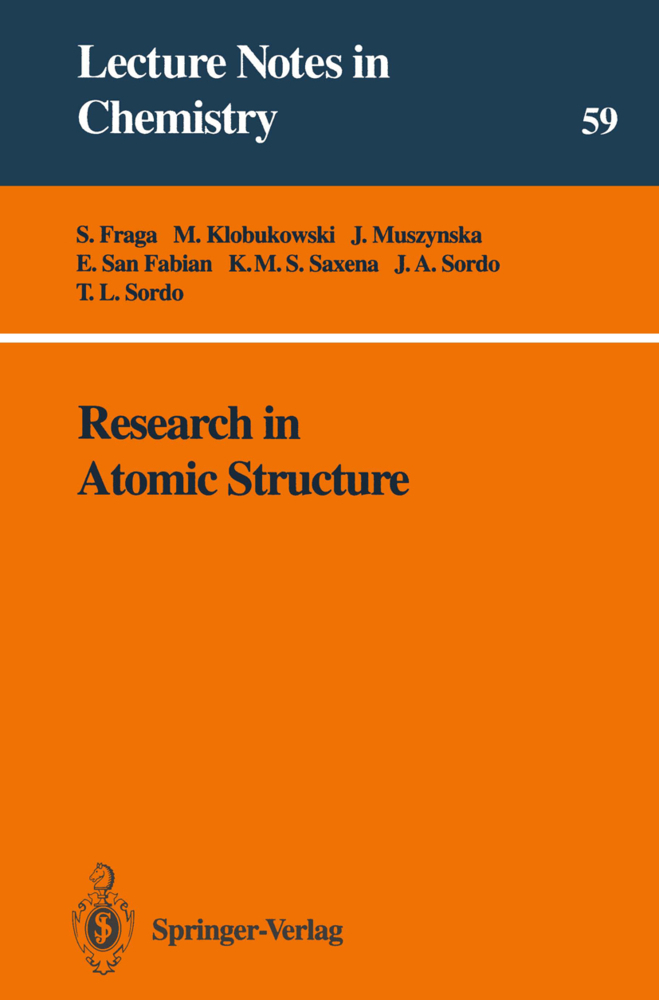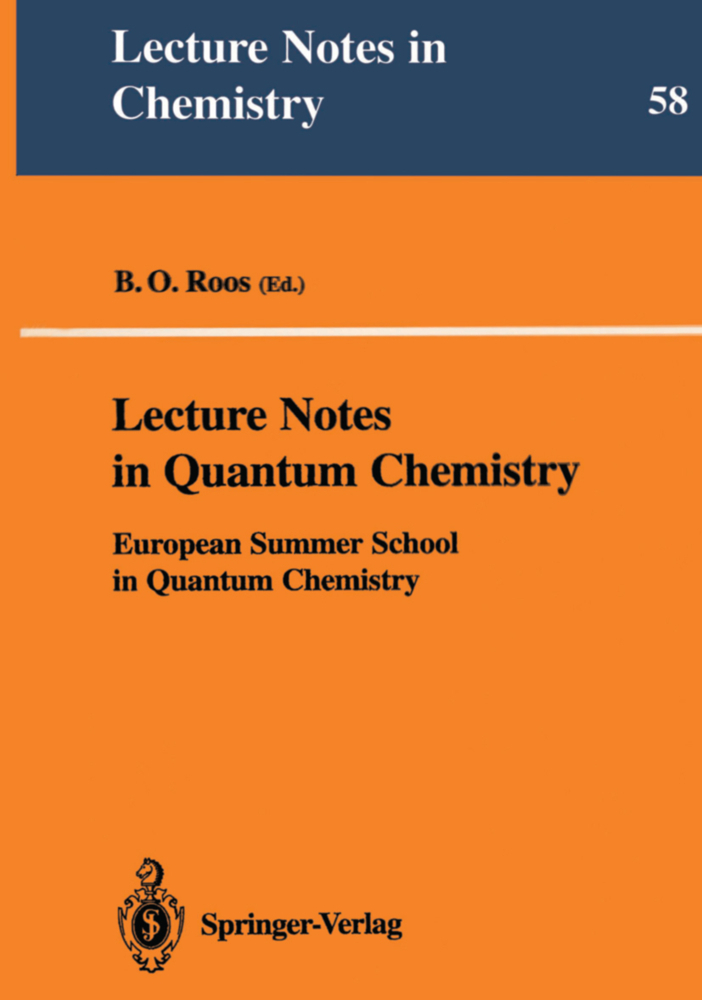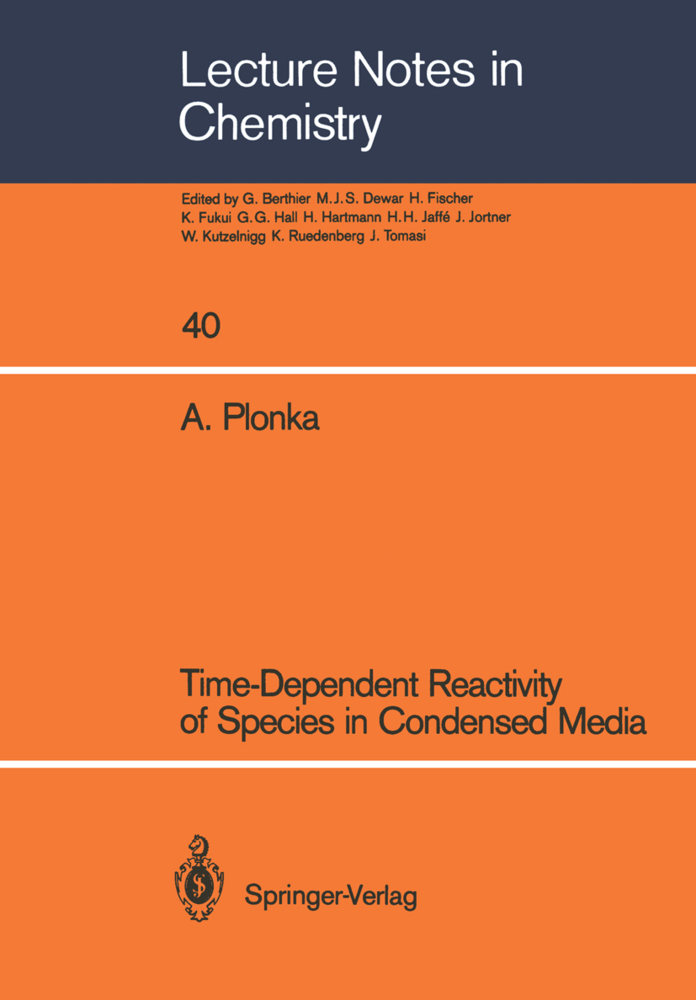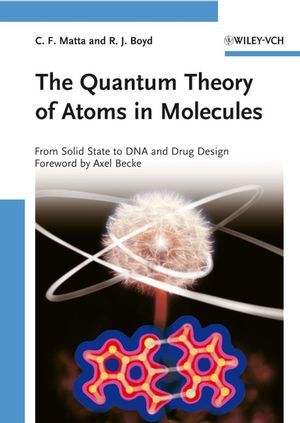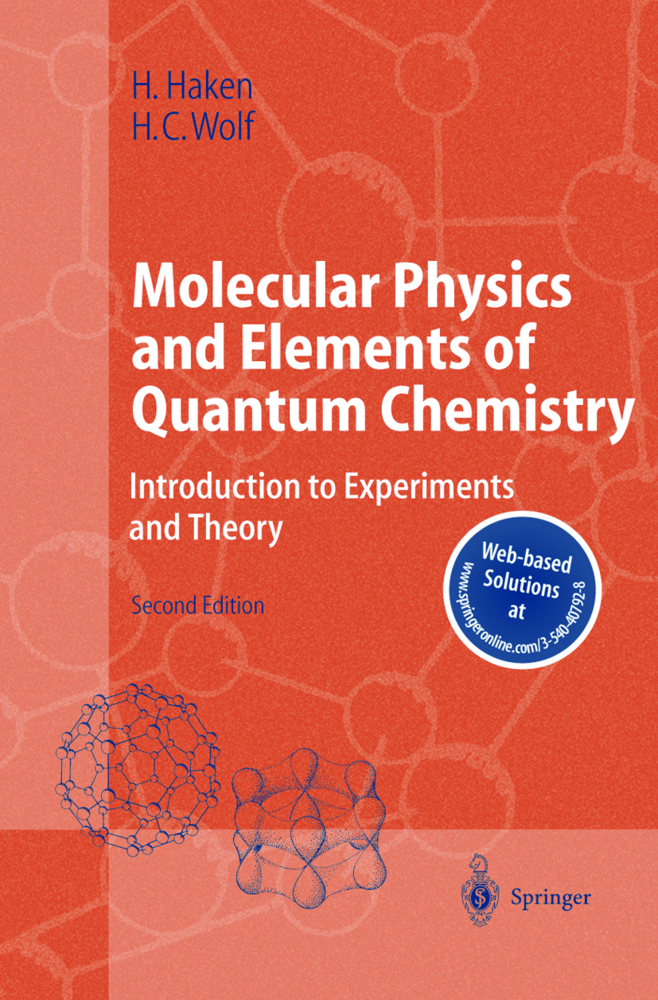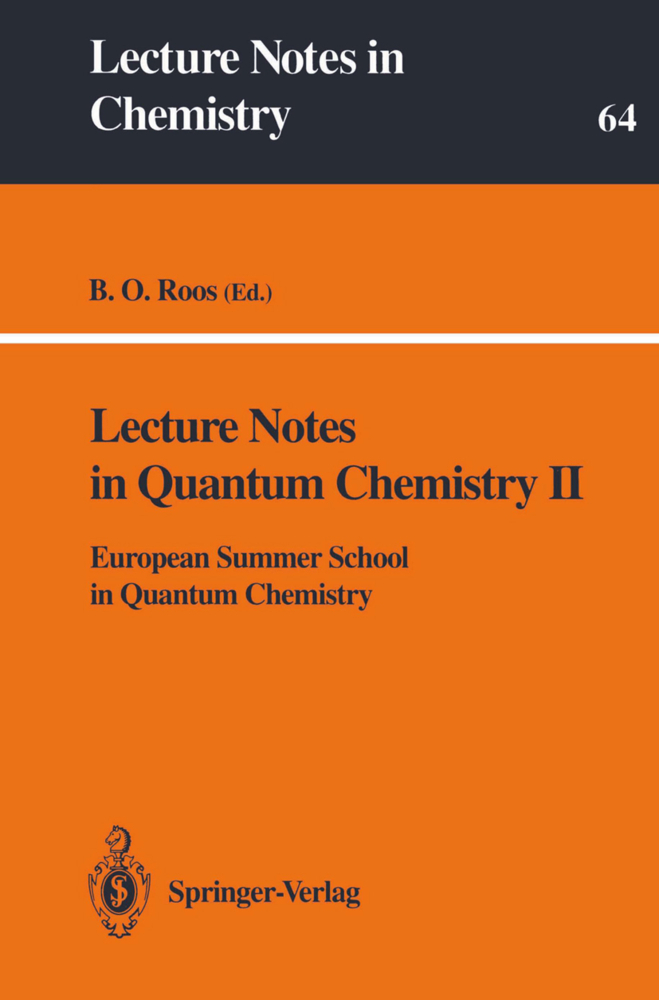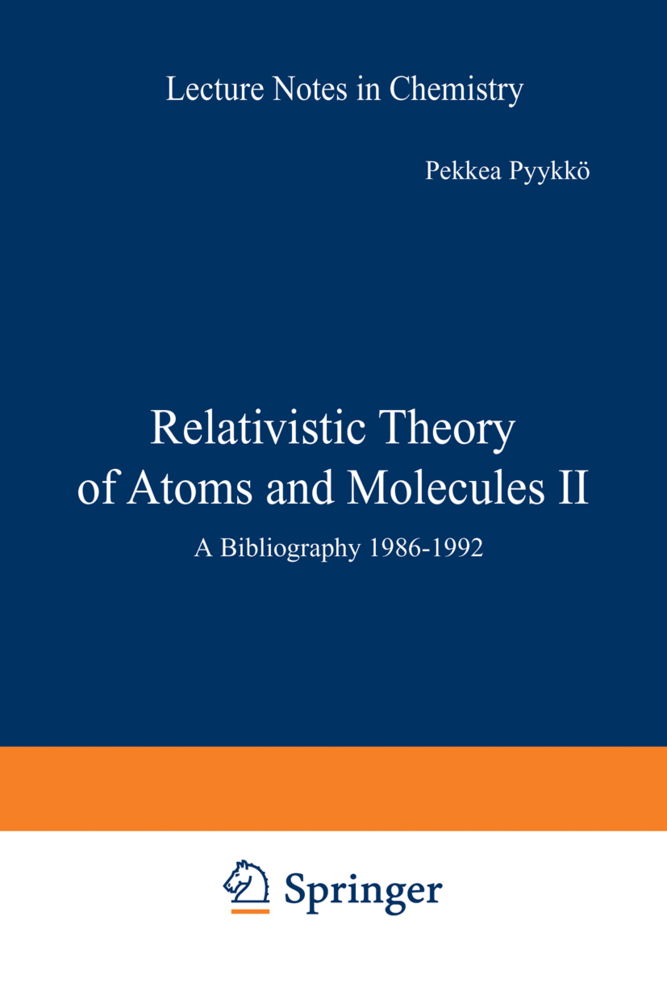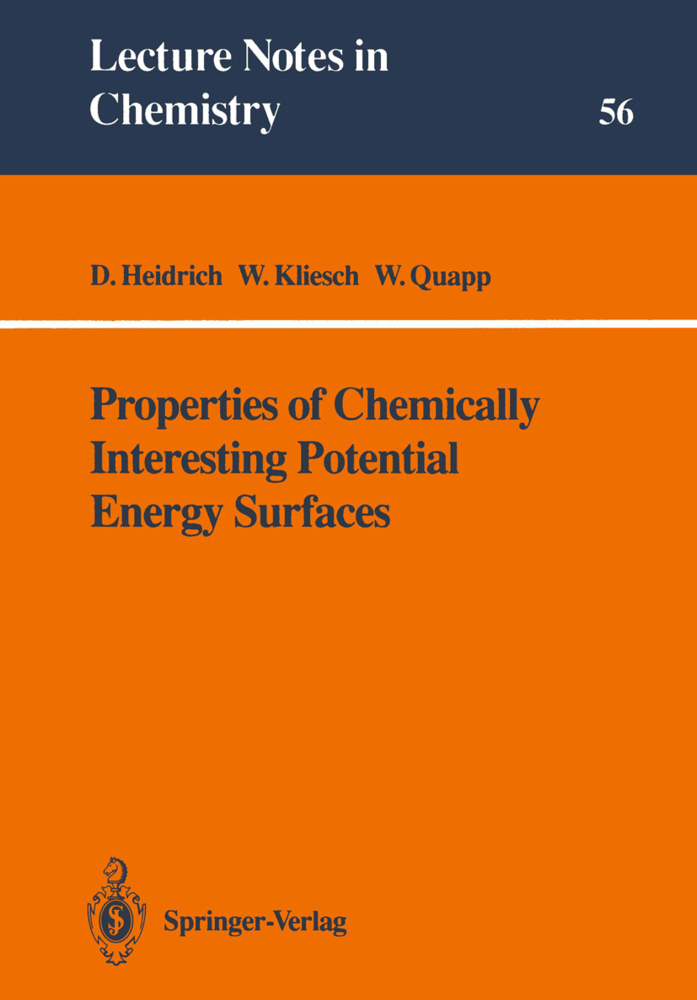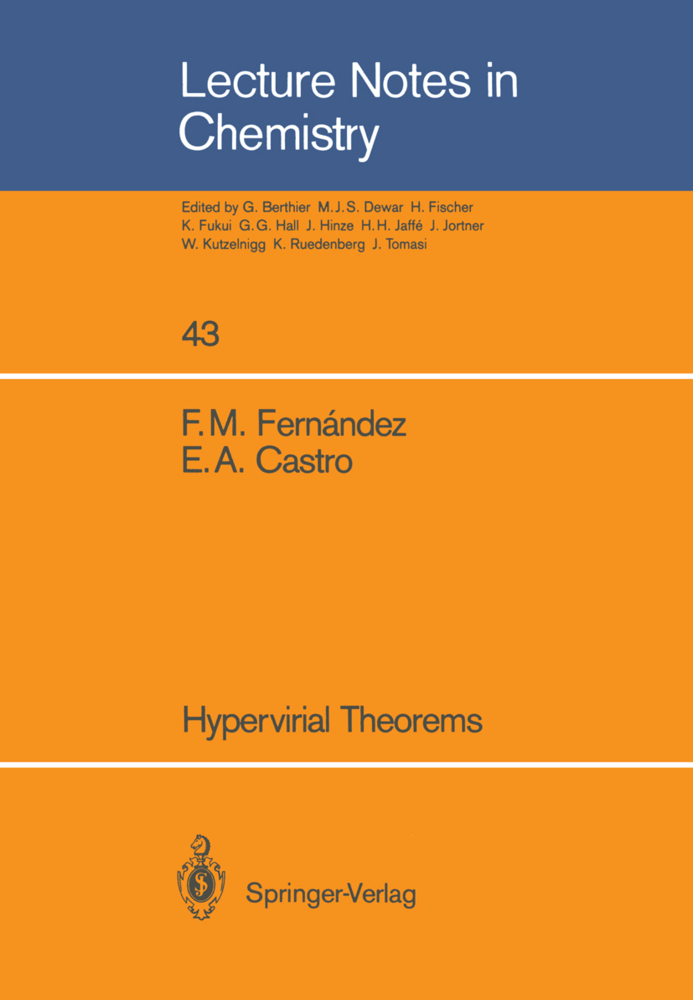Selected Topics of the Theory of Chemical Elementary Processes
Selected Topics of the Theory of Chemical Elementary Processes
Introduction 1 1. 2. Basic Concepts and Phenomenological Description 6 2.1. Separation of the Center-of-Mass Motion 8 2.2. Separation of Electronic and Nuclear Motions. Interaction Potentials (Potential-Energy Surfaces) 11 2.2.1. Heuristic Considerations 11 2.2.2. Born-Oppenheimer Separation. Adiabatic Approximation, 16 Present State of Potential-Energy-Burface 2.2.3. Calculations 23 2.3. Scattering Channels ~6 2.4. Classification of Elementary Processes. Microscopic Mechanism 27 D.ynamics of Atomic and Molecular Collisions: 3. Electronically Adiabatic Processes 32 Classical Approach 3.1. 33 Some Arguments for the Reliability of the Classical Approach 33 Atom-Atom Collisions. Elastic Scattering 34 Quasiclassical Treatment of Elementary Processes in Triatomic Systems: Inelastic and Reactive Scattering 44 IV Examples of Results of Trajectory Calculations 59 3.1.4. 64 Elements of Quantum-Mechanical Methods 3.2. Correspondence of Classical and Quantum 3.2.1. 64 Mechanical Theories Time-Dependent Scattering Theory 71 3.2.2. Stationary Scattering Theory 77 3.2.3. One-Dimensional Scattering 78 3.2.3.1 - Three-Dimensional Elastic Scattering 83 3.2.3.2. Rearrangement Scattering (Reactions) 85 3.2.3.3. Examples of Quantum-Mechanical Calculations 3.2.4.
2.1. Separation of the Center-of-Mass Motion
2.2. Separation of Electronic and Nuclear Motions. Interaction Potentials (Potential-Energy Surfaces)
2.3. Scattering Channels
2.4. Classification of Elementary Processes. Microscopic Mechanism
3. Dynamics of Atomic and Molecular Collisions: Electronically Adiabatic Processes
3.1. Classical Approach
3.2. Elements of Quantum-Mechanical Methods
4. Classical-Limit and Semiclassical Approaches to the Calculation of Molecular Collisional Transition Probabilities
4.1. Classical S-Matrix Method
4.2. The Semiclassical Approach
4.3. Calculation of Transition Probabilities Using the Correspondence Principle
5. Theory of Non-Adiabatic Transitions in Atomic and Molecular Collision Processes
5.1. Crossing and Pseudo-Crossing of Potential-Energy Surfaces
5.2. Non-Adiabatic Coupling and Selection Rules
5.3. The Two-State Problem in Adiabatic and Diabatic Representations
5.4. The Landau-Zener Model
Appendix: Transformation of the Hamiltonian to Center-of-Mass and Relative Coordinates
Literature.
1. Introduction
2. Basic Concepts and Phenomenological Description2.1. Separation of the Center-of-Mass Motion
2.2. Separation of Electronic and Nuclear Motions. Interaction Potentials (Potential-Energy Surfaces)
2.3. Scattering Channels
2.4. Classification of Elementary Processes. Microscopic Mechanism
3. Dynamics of Atomic and Molecular Collisions: Electronically Adiabatic Processes
3.1. Classical Approach
3.2. Elements of Quantum-Mechanical Methods
4. Classical-Limit and Semiclassical Approaches to the Calculation of Molecular Collisional Transition Probabilities
4.1. Classical S-Matrix Method
4.2. The Semiclassical Approach
4.3. Calculation of Transition Probabilities Using the Correspondence Principle
5. Theory of Non-Adiabatic Transitions in Atomic and Molecular Collision Processes
5.1. Crossing and Pseudo-Crossing of Potential-Energy Surfaces
5.2. Non-Adiabatic Coupling and Selection Rules
5.3. The Two-State Problem in Adiabatic and Diabatic Representations
5.4. The Landau-Zener Model
Appendix: Transformation of the Hamiltonian to Center-of-Mass and Relative Coordinates
Literature.
| ISBN | 978-3-540-08768-7 |
|---|---|
| Artikelnummer | 9783540087687 |
| Medientyp | Buch |
| Copyrightjahr | 1978 |
| Verlag | Springer, Berlin |
| Umfang | X, 176 Seiten |
| Abbildungen | X, 176 p. |
| Sprache | Englisch |

